Noor Inayat Khan
| Noor Inayat Khan | |
|---|---|
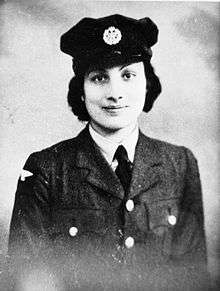 Noor-un-Nisa Inayat Khan, circa 1943 | |
| Other name(s) | Nora Inayat-Khan |
| Nickname(s) |
Nora Baker Madeleine (SOE codename) Nurse (SOE callsign) Jeanne-Marie Renier (SOE alias) |
| Born |
1 January 1914 Moscow, Russian Empire |
| Died |
13 September 1944 (aged 30) Dachau concentration camp, Bavaria, Nazi Germany |
| Allegiance |
|
| Service/ |
Women's Auxiliary Air Force Special Operations Executive |
| Years of service | 1940–1944 |
| Rank | Assistant Section Officer |
| Unit | Cinema (SOE) |
| Battles/wars | Second World War |
| Awards |
Mentioned in dispatches |
Noor-un-Nisa Inayat Khan, GC (1 January 1914 – 13 September 1944), aka Nora Inayat-Khan, was a British heroine of World War II renowned for her service in the Special Operations Executive.[1]
She also went by the name Nora Baker and was a published author[2] of Indian and American descent who was posthumously awarded the George Cross for her service in the SOE, the highest civilian decoration in the UK.[1] As an SOE agent she became the first female wireless operator to be sent from Britain into occupied France to aid the French Resistance during World War II, and was Britain's first Muslim war heroine.[1]
Early years
Inayat Khan,[3] the eldest of four children, was born on 1 January 1914 in Moscow.[4] Her siblings were Vilayat (1916–2004), Hidayat (1917–2016), and Khair-un-Nisa (1919–2011).[5]
Her father, Inayat Khan, came from a noble Indian Muslim family[5]—his mother was a descendant of the uncle of Tipu Sultan, the 18th-century ruler of the Kingdom of Mysore. He lived in Europe as a musician and a teacher of Sufism. Her mother, Pirani Ameena Begum (born Ora Ray Baker), was an American[3][5] from Albuquerque, New Mexico, who met Inayat Khan during his travels in the United States. Ora Baker was the half-sister of American yogi and scholar Pierre Bernard, her guardian at the time she met Inayat (Hazrat is an honorific, translated as Saint).[6] Vilayat later became head of the Sufi Order International.
In 1914, shortly before the outbreak of the First World War, the family left Russia for London, and lived in Bloomsbury. Inayat Khan attended nursery at Notting Hill. In 1920 they moved to France, settling in Suresnes near Paris, in a house that was a gift from a benefactor of the Sufi movement. After the death of her father in 1927, Inayat Khan took on the responsibility for her grief-stricken mother and her younger siblings.
As a young girl, she was described as quiet, shy, sensitive, and dreamy. She studied child psychology at the Sorbonne and music at the Paris Conservatory under Nadia Boulanger, composing for harp and piano. She began a career writing poetry and children's stories, and became a regular contributor to children's magazines and French radio. In 1939, her book, Twenty Jataka Tales, inspired by the Jataka tales of Buddhist tradition, was published in London.[7]
After the outbreak of the Second World War, when France was overrun by German troops, the family fled to Bordeaux and, from there by sea, to England, landing in Falmouth, Cornwall, on 22 June 1940.
Women's Auxiliary Air Force
Although Khan was deeply influenced by the pacifist teachings of her father, she and her brother Vilayat decided to help defeat Nazi tyranny: "I wish some Indians would win high military distinction in this war. If one or two could do something in the Allied service which was very brave and which everybody admired it would help to make a bridge between the English people and the Indians." [8]
In November 1940, she joined the Women's Auxiliary Air Force (WAAF) and, as an Aircraftwoman 2nd Class, was sent to be trained as a wireless operator.[9] Upon assignment to a bomber training school in June 1941, she applied for a commission in an effort to relieve herself of the boring work there.[9]
Special Operations Executive
Later, Khan was recruited to join F (France) Section of the Special Operations Executive and in early February 1943 she was posted to the Air Ministry, Directorate of Air Intelligence, seconded to First Aid Nursing Yeomanry (FANY), and sent to Wanborough Manor, near Guildford in Surrey, after which she was sent to Aylesbury, in Buckinghamshire, for special training as a wireless operator in occupied territory.[10]
She would be the first woman to be sent over in that capacity, all the woman agents before her having been sent as couriers.[10] Having had previous wireless telegraphy (W/T) training, she had an edge on those who were just beginning their radio training, and was both fast and accurate.[11]
From Aylesbury she went on to Beaulieu, where the security training was capped with a practice mission – in the case of wireless operators, to find a place in a strange city from which they could transmit back to their instructors without being detected by an agent unknown to them who would be shadowing them.[10]
The ultimate exercise was the mock Gestapo interrogation, intended to give agents a taste of what might be in store for them if they were captured and some practice in maintaining their cover story. Her escaping officer found her interrogation "almost unbearable" and reported that "she seemed terrified… so overwhelmed she nearly lost her voice", and that afterwards "she was trembling and quite blanched."[12]
Her finishing report, which the official historian of F Section found in her personal file long after the war, read: "Not overburdened with brains but has worked hard and shown keenness, apart from some dislike of the security side of the course. She has an unstable and temperamental personality and it is very doubtful whether she is really suited to work in the field." Next to this comment, Maurice Buckmaster, the head of F Section, had written in the margin "Nonsense"[13] and that "We don't want them overburdened with brains." [14][15]
Her superiors held mixed opinions on her suitability for secret warfare, and her training was incomplete due to the need to get trained W/T operators into the field. Khan's "childlike" qualities, particularly her gentle manner and "lack of ruse", had greatly worried her instructors at SOE's training schools.[16] One instructor wrote that "she confesses that she would not like to have to do anything 'two faced'", while another said she was "very feminine in character, very eager to please, very ready to adapt herself to the mood of the company, the one of the conversation, capable of strong attachments, kind hearted, emotional, imaginative."[16]
A further observer said: "Tends to give far too much information. Came here without the foggiest idea what she was being trained for." Later, others commented that she was also physically unsuited, claiming that she would not easily disappear into a crowd.[16]
Physically quite small in stature, she received poor athletic reports from her instructors: "Can run very well but otherwise clumsy. Unsuitable for jumping" "Pretty scared of weapons but tries hard to get over it."[16]

Khan was training as a W/T operator, and in that field she was getting quite adequate reports. Her "fist", or style of tapping the keys, was somewhat heavy, apparently owing to her fingers being swollen by chilblains, but her speed was improving every day. Like many talented musicians – Khan played the harp – she was a natural signaller.[16]
Further, Vera Atkins (the intelligence officer for F Section) insisted, her commitment was unquestioned, as another training report had readily confirmed: "She felt she had come to a dead end in the WAAF, and was longing to do something more active in the prosecution of the war, something that would demand more sacrifice." So when Suttill's request first came, Vera saw Khan as a natural choice, and although her final training in field security and encoding had to be cut short, she judged her ready to go.[17]
Khan's mission would be an especially dangerous one. So successful had female couriers been that the decision was made to use them as wireless operators as well, which was even more dangerous work, probably the most dangerous work of all. The job of the operator was to maintain a link between the circuit in the field and London, sending and receiving messages about planned sabotage operations or about where arms were needed for resistance fighters. Without such communication it was almost impossible for any resistance strategy to be coordinated, but the operators were highly vulnerable to detection which was improving as the war progressed.[18]
Hiding themselves as best they could, with aerials strung up in attics or disguised as washing lines, they tapped out Morse on the key of transmitters, and would often wait hours for a reply while alone waiting for a signal in reply saying the messages were received. If they stayed on the air transmitting for more than 20 minutes, their signals were likely to be picked up by the enemy, and detection vans would trace the source of these suspect signals. When the operator moved location, the bulky transmitter had to be carried, sometimes concealed in a suitcase or in a bundle of firewood. If stopped and searched, the operator would have no cover story to explain the transmitter. In 1943, an operator's life expectancy was six weeks.[19]
Khan had been staying in at a country house in Buckinghamshire, a place where agents had a final chance to adjust to their new identities and consider their missions before departure. Khan's conducting officer, a female companion who watched over agents in training, told Atkins that Khan had descended into a gloom and was clearly troubled by the thought of what she was about to undertake. Then two fellow agents staying with Khan at the country house had written directly to Vera to say they felt she should not go. Such an intervention at this stage was most unusual.[20]
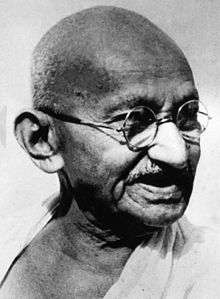
Atkins decided to call Inayat Khan back to London, to meet and talk.[21] Vilayat remembered trying to stop his sister going on her mission exactly the time of this meeting. "You see, Nora and I had been brought up with the policy of Gandhi's nonviolence, and at the outbreak of war we discussed what we would do", said Vilayat, who had followed his father and become a Sufi mystic. "She said, 'Well, I must do something, but I don't want to kill anyone.' So I said, 'Well, if we are going to join the war, we have to involve ourselves in the most dangerous positions, which would mean no killing.'
"Then, when we eventually go to England, I volunteered for minesweeping and she volunteered for SOE, and so I have always had a feeling of guilt because of what I said that day."[22]
Khan and Atkins met at Manetta's, a restaurant in Mayfair. Atkins wanted to confirm that Khan believed in her own ability to succeed. Confidence was the most important thing for any agent. However poor Khan's jumping or even her encoding, Atkins believed those agents who did well were those who knew before they set off that they could do the job. Her intention was to let Khan feel she had an opportunity to back out gracefully should she so wish. Atkins began by asking if she was happy in what she was doing. Khan looked startled and said: "Yes, of course."[23]
Atkins then told her about the letter and its contents. Khan was reportedly upset that anybody would think she was unfit. "You know that if you have any doubts, it is not too late to turn back ... If you don't feel you're the type–if for any reason whatever you don't want to go you only have to tell me now. I'll arrange everything so that you have no embarrassment. You will be transferred to another branch of the service with no adverse mark on your file. We have every respect for the man or woman who admits frankly to not feeling up to it", Atkins told her, adding: "For us there is only one crime: to go out there and let your comrades down."[23]
Khan insisted adamantly that she wanted to go and was competent for the work. Her only concern, she said, was her family, and Vera sensed immediately that this was, as she had suspected, where the problem lay. Khan had found saying goodbye to her widowed mother the most painful thing she had ever had to do, she said. As Vera had advised her, she had told her mother only half the truth: she had said she was going abroad, but to Africa, and she had found maintaining the deception cruel.[24]
Atkins asked if there was anything she could do to help with family matters. Khan said that, should she go missing, she would like Atkins to avoid worrying her mother as far as possible. The normal procedure, as Inayat Khan knew, was that when an agent went to the field, Vera would send out a periodic "good news" letters to the family, letting them know the person concerned was well. If the agent went missing, the family would be told so. What Khan was suggesting was that bad news should be broken to her mother only if it was beyond any doubt that she was dead. Atkins said she would agree to this arrangement if it was what she wanted. With this assurance Khan seemed content and confident once more. Any doubts in Atkins's mind were also now apparently settled.[25]

Vera always accompanied the woman agents to the departure airfields, if she possibly could. Those who were not dropped into France by parachute (as were agents like Andrée Borrel and Lise de Baissac) were flown in on Lysanders, a light monowing transport aircraft designed to land on short and rough fields. These planes were met by a "reception committee" consisting of SOE agents and local French helpers. The reception committees were alerted to imminent arrival of a plane by a BBC action message inserted as a message personnel; these were broadcast across France every evening, mostly for ordinary listeners wishing to contact friends or family separated by war. The messages broadcast for SOE, agreed in advance between HQ and the circuit organizer, usually by wireless signal, sounded like odd greetings or aphorisms–"Le bibou n'est pas un éléphant" (The owl is not an elephant)–but the reception committee on the ground would know that the message meant a particular (pre-planned) operation would take place.[25]
Promoted to Assistant Section Officer (the WAAF equivalent of RAF corporal), Inayat Khan was to fly by Lysander with the June moon to a field near Angers, from where she would make her way to Paris to link up with the leader of a Prosper sub-circuit named Emile Garry, or Cinema, an alias chosen because of his uncanny resemblance to the film star Gary Cooper. Once on the ground Khan would make contact with the Prosper circuit organizer, Francis Suttill, and take on her new persona as a children's nurse, "Jeanne-Marie Renier", using fake papers in that name. To her SOE colleagues, however, she would be known simply as "Madeleine".[26]
Regardless of her perceived shortcomings, her fluent French and her competency in wireless operation—coupled with a shortage of experienced agents—made her a desirable candidate for service in Nazi-occupied France. On 16/17 June 1943, cryptonymed 'Madeleine'/W/T operator 'Nurse' and under the cover identity of Jeanne-Marie Regnier, Assistant Section Officer Inayat Khan was flown to landing ground B/20A 'Indigestion' in Northern France on a night landing double Lysander operation, code named Teacher/Nurse/Chaplain/Monk, along with agents Diana Rowden (code named Paulette/Chaplain), and Cecily Lefort (code named Alice/Teacher). They were met by Henri Déricourt.[27]
Capture and imprisonment
Inayat Khan was betrayed to the Germans, either by Henri Déricourt or Renée Garry. Déricourt (codename Gilbert) was an SOE officer and former French Air Force pilot who had been suspected of working as a double agent for the Sicherheitsdienst. Garry was the sister of Emile Henri Garry, the head agent of the 'Cinema' and 'Phono' circuits, and Inayat Khan's organiser in the Cinema network (later renamed Phono). Emile Henri Garry was later arrested and executed at Buchenwald in September 1944.[28][29][30]
Allegedly paid 100,000 francs (some sources state 500 pounds), Renée Garry's actions have been attributed by some, at least partially to Garry's suspicion she had lost the affections of SOE agent France Antelme to Inayat Khan. After the war, she was tried, but escaped conviction by one vote.[15]
On or around 13 October 1943, Khan was arrested and interrogated at the SD Headquarters at 84 Avenue Foch in Paris. During that time, she attempted escape twice. Hans Kieffer, the former head of the SD in Paris, testified after the war that she did not give the Gestapo a single piece of information, but lied consistently.[15]
However, other sources indicate that she chatted amiably with an out-of-uniform Alsatian interrogator, and provided personal details that enabled the SD to answer random checks in the form of questions about her childhood and family.[31]
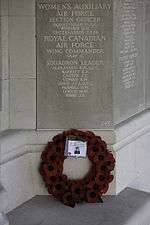
Khan did not talk about her activities under interrogation but the SD found her notebooks. Contrary to security regulations, she had copied out all the messages she had sent as an SOE operative (this may have been due to her misunderstanding what a reference to filing meant in her orders, and also the truncated nature of her security course due to the need to insert her into France as soon as possible). Although she refused to reveal any secret codes, the Germans gained enough information from them to continue sending false messages imitating her. As a WAAF signaller, Khan had been nicknamed "Bang Away Lulu" because of her distinctively heavy-handed style, which was said to be a result of chilblains.[32]
Some claim London failed to properly investigate anomalies which would have indicated the transmissions were sent under enemy control, in particular the change in the 'fist' (the style of the operator's Morse transmission). However, according to M.R.D. Foot, the Sicherheitsdienst were quite adept at faking operators' fists. The well-organised and skillful counter-espionage work of the SD under Hans Josef Kieffer is, in fact, the true reason for the intelligence failures.[33][31]
Also, Henri Déricourt ("Gilbert"), F Section's air-landing officer in France, literally gave SOE's secrets to the SD in Paris. He would later claim to have been working for the Secret Intelligence Service (SIS was commonly known as MI6), without the knowledge of SOE, as part of a complex deception plan in the run-up to D-Day.[34]
As a result, however, three more agents sent to France were captured by the Germans at their parachute landing, including Madeleine Damerment, who was later executed.[35] Sonya Olschanezky ('Tania'), a locally recruited SOE agent had learnt of Inayat Khan's arrest and sent a message to London through her fiancé, Jacques Weil, telling Baker Street of her capture and warning HQ to suspect any transmissions from "Madeleine".[36]
Colonel Maurice Buckmaster ignored the message as unreliable because he did not know who Olschanezky was. As a result, German transmissions from Khan's radio continued to be treated as genuine, leading to the unnecessary deaths of SOE agents, including Olschanezky herself, who was executed at Natzweiler-Struthof concentration camp on 6 July 1944. When Vera Atkins investigated the deaths of missing SOE agents, she initially confused Inayat Khan with Olschanezky (they were similar in appearance), who was unknown to her, believing Khan had been killed at Natzweiler, correcting the record only when she learned of Khan's fate at Dachau.[36]
On 25 November 1943, Inayat Khan escaped from the SD Headquarters, along with fellow SOE agents John Renshaw Starr and Léon Faye, but was recaptured in the vicinity. There was an air raid alert as they escaped across the roof. Regulations required a count of prisoners at such times and their escape was discovered before they could get away. After refusing to sign a declaration renouncing future escape attempts, Inayat Khan was taken to Germany on 27 November 1943 "for safe custody" and imprisoned at Pforzheim in solitary confinement as a "Nacht und Nebel" ("Night and Fog": condemned to "Disappearance without Trace") prisoner, in complete secrecy. For ten months, she was kept there, shackled at her hands and feet. [37]
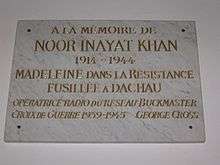
Inayat Khan was classified as "highly dangerous" and shackled in chains most of the time. As the prison director testified after the war, Inayat Khan remained uncooperative and continued to refuse to give any information on her work or her fellow operatives, although in her despair at the appalling nature of her confinement, other prisoners could hear her crying at night. However, by the ingenious method of scratching messages on the base of her mess cup, she was able to inform another inmate of her identity, giving the name of Nora Baker and the London address of her mother's house.[38]
Execution
Inayat Khan was abruptly transferred to Dachau concentration camp with fellow agents Yolande Beekman, Madeleine Damerment and Eliane Plewman, and at dawn on the following morning, 13 September, the four women were executed.[39]
A Gestapo man named Max Wassmer was in charge of prisoner transports at Karlsruhe and accompanied the women to Dachau.[40] Another Gestapo man named Christian Ott gave a statement to American investigators after the war as to the fate of Inayat Khan and her three companions. Ott was stationed at Karlsruhe and volunteered to accompany the four women to Dachau as he wanted to visit his family in Stuttgart on the return journey.[41] Although not present at the execution, Ott told investigators what Wassmer had told him.
The four prisoners had come from the barrack in the camp, where they had spent the night, into the yard where the shooting was to be done. Here he [Wassmer] had announced the death sentence to them. Only the Lagerkommandant and the two SS men had been present. The German-speaking Englishwoman (the major) had told her companion of this death sentence. All four had grown very pale and wept; the major asked whether they could protest against the sentence. The Kommandant declared that no protest could be made against the sentence. The major had then asked to see a priest. The camp Kommandant refused this on the grounds that there was no priest in the camp. The four prisoners now had to kneel with their heads towards a small mound of earth and were killed by the two SS, one after another by a shot through the back of the neck. During the shooting the two Englishwomen held hands and the two French-women likewise. For three of the prisoners the first shot caused death, but for the German-speaking Englishwoman a second shot had to be fired as she still showed signs of life after the first shot. After the shooting of these prisoners the Lagerkommandant said to the two SS men that he took a personal interest in the jewellery of the women and that this should be taken into his office.[42]
This is an unreliable account as Ott told the investigator he had asked Wassmer the following question after being told what had happened to the women: "But tell me, what really happened", to which Wasser replied: "So you want to know how it really happened?"[43]
In 1958 an anonymous Dutch prisoner asserted that Inayat Khan was cruelly beaten by an SS officer named Wilhelm Ruppert before being shot from behind.[44] Her last word was reported as "Liberté".[45] She was survived by her mother and three siblings.[46][47]
Honours and awards
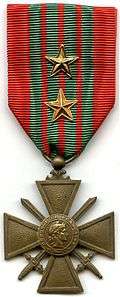
Inayat Khan was posthumously awarded the George Cross in 1949, and a French Croix de Guerre with silver star (avec étoile de vermeil). As she was still considered "missing" in 1946, she could not be recommended for a Member of the Order of the British Empire,[48] but was Mentioned in Despatches instead in October 1946.[49] Khan was the third of three Second World War FANY members to be awarded the George Cross, Britain's highest award for gallantry not in the face of the enemy.[46]
At the beginning of 2011, a campaign was launched to raise £100,000 for a bronze bust of her in central London close to her former home.[50] It was claimed this would be the first memorial in Britain to either a Muslim or an Asian woman,[51] but Inayat Khan had already been commemorated on the FANY memorial in St Paul's Church, Wilton Place, Knightsbridge, London,[52] which lists the 52 members of the Corps who gave their lives on active service.
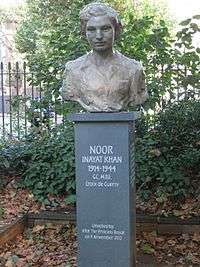
The unveiling of the bronze bust by HRH The Princess Royal took place on 8 November 2012 in Gordon Square Gardens, London.[53][54]
Inayat Khan is commemorated on a stamp issued by the Royal Mail on 25 March 2014 in a set of stamps about "Remarkable Lives".[55]
George Cross citation
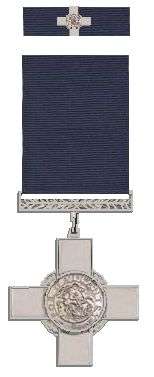
The announcement of the award of the George Cross was made in the London Gazette of 5 April 1949. The full citation reads:[38]
The KING has been graciously pleased to approve the posthumous award of the GEORGE CROSS to:— Assistant Section Officer Nora INAYAT-KHAN (9901), Women's Auxiliary Air Force.
Assistant Section Officer Nora INAYAT-KHAN was the first woman operator to be infiltrated into enemy occupied France, and was landed by Lysander aircraft on 16th June, 1943. During the weeks immediately following her arrival, the Gestapo made mass arrests in the Paris Resistance groups to which she had been detailed. She refused however to abandon what had become the principal and most dangerous post in France, although given the opportunity to return to England, because she did not wish to leave her French comrades without communications and she hoped also to rebuild her group. She remained at her post therefore and did the excellent work which earned her a posthumous Mention in Despatches.
The Gestapo had a full description of her, but knew only her code name "Madeleine". They deployed considerable forces in their effort to catch her and so break the last remaining link with London. After 3 months, she was betrayed to the Gestapo and taken to their H.Q. in the Avenue Foch. The Gestapo had found her codes and messages and were now in a position to work back to London. They asked her to co-operate, but she refused and gave them no information of any kind. She was imprisoned in one of the cells on the 5th floor of the Gestapo H.Q. and remained there for several weeks during which time she made two unsuccessful attempts at escape. She was asked to sign a declaration that she would make no further attempts, but she refused and the Chief of the Gestapo obtained permission from Berlin to send her to Germany for "safe custody". She was the first agent to be sent to Germany.
Assistant Section Officer INAYAT-KHAN was sent to Karlsruhe in November 1943, and then to Pforzheim where her cell was apart from the main prison. She was considered to be a particularly dangerous and unco-operative prisoner. The Director of the prison has also been interrogated and has confirmed that Assistant Section Officer INAYAT-KHAN, when interrogated by the Karlsruhe Gestapo, refused to give any information whatsoever, either as to her work or her colleagues.
She was taken with three others to Dachau Camp on the 12 September 1944. On arrival, she was taken to the crematorium and shot.
Assistant Section Officer INAYAT-KHAN displayed the most conspicuous courage, both moral and physical over a period of more than 12 months.
| George Cross | ||||
| 1939–1945 Star | France and Germany Star | War Medal with Mention in Dispatches |
Croix de Guerre (avec étoile de vermeil) | |
In popular culture
Theatre
In 2018 a play about the life and death of Noor, entitled Agent Madeleine, premiered at the Ottawa Fringe Festival.[56] The role of Noor was played by Puja Uppal. The following deviations from facts have been noted:
- Noor is in a relationship with Leo Marks, instead of an unknown SOE officer.
- John Starr, Leon Faye, and a variety of prisoners of 84 Avenue Foch were represented by a single character, "Marcel de Faye".
- Noor is imprisoned at 84 Avenue Foch until she is moved to Dachau, where she is executed alone.
- Noor's escape attempts are altered - her escape out of the bathroom window is foiled by an air raid siren, and her escape attempt with the screwdriver is foiled when a guard discovers her with it.
Film
In September 2012, producers Zafar Hai and Tabrez Noorani obtained the film rights to the biography Spy Princess: The Life of Noor Inayat Khan by Shrabani Basu.[57]
Literature
- On 6 September 2010, American poet Stacy Ericson posted a poem entitled "Resistance", dedicated to Noor Inayat Khan and providing a link back to Inayat Khan 's biography. This may have been the first poem dedicated to Noor Inayat Khan and refers to the isolation and fear shared by those in resistance to oppressive regimes.[58]
- On 3 March 2013, Irfanulla Shariff, an American poet, posted a poem on the internet, "A Tribute To The Illuminated Woman of World War II", dedicated to Khan, which illustrates the life story of this remarkable heroic woman of World War II.[59]
Television
- A Man Called Intrepid (first airdate February 1979), is a six-hour, fact-based miniseries broadcast in Canada on CTV and in the US on NBC which starred David Niven as its protagonist Sir William Stephenson, and Barbara Hershey as Inayat Khan. The following deviations from facts have been noted:
- Her capture was attributed to German diligence in sweeping for transmissions, not to betrayal by Déricourt or Garry
- The torture was managed by "Colonel Juergen", a composite character partly based on Wilhelm Ruppert; it is unlikely that a single German military officer would have been in four locations: Paris Gestapo, Karlsruhe prison, Dachau and the Oslo branch of SD (even sequentially)
- During the escape attempt by Inayat Khan and Starr (unnamed), Inayat Khan reached her transmitter only to discover that she had been set up by Juergen, and that Starr was his plant
- When the fake transmissions were sent in her name, Inayat Khan managed to signal her (fictitious) handler and lover Evan Michaelian (played by Michael York) that she was compromised, by giving an incorrect answer to a question which related to a secret she had revealed to him (and Michaelian was able to then tell Stephenson and SOE to retaliate with faked replies)
- Juergen arranged another escape attempt on the route from Karlsruhe to Dachau, and she was executed alone (no mention of Beekman, Plewman, and Damerment) after not being taken in. Also Juergen wept after her execution (which was not likely from Ruppert)
- While Ruppert was executed on 29 May 1946 by the American forces in Germany, Juergen was killed in 1945 in Oslo Harbour by the second of two bombs planted by Michaelian who thus (possibly inadvertently) avenged her execution
- In 2014, PBS aired a 60-minute biographical docudrama entitled Enemy of the Reich: The Noor Inayat Khan Story,[60] executive produced by Alex Kronemer and Michael Wolfe of Unity Productions Foundation[61] and directed by Robert H. Gardner. Grace Srinivasan played the title role.[62]
- In 2018, Netflix released an original show entitled “Churchill’s Secret Agents the new recruits”, season 1 episode 4 features a summary of Inayat Khan’s final mission with the SOE.
Related cultural works
- Carve Her Name with Pride (1958)
- Movie based on the book by R.J. Minney about Violette Szabo, starring Paul Scofield and Virginia McKenna.
- Churchill's Spy School (2010)[63]
- Documentary about the SOE "finishing school" on the Beaulieu estate in Hampshire.
- Les Femmes de l'Ombre (aka Female Agents) (2008)
- French film about five SOE female agents and their contribution towards the D-Day invasions.
- Nancy Wake Codename: The White Mouse (1987)
- Docudrama about Nancy Wake's work for SOE, partly narrated by Wake (Wake was disappointed that the film was changed from an 8-hour resistance story to a 4-hour love story).
- Now It Can Be Told (aka School for Danger) (1946)
- Filming began in 1944 and starred real-life SOE agents Captain Harry Rée and Jacqueline Nearne codenamed "Felix" and "Cat", respectively. The film tells the story of the training of agents for SOE and their operations in France. The training sequences were filmed using the SOE equipment at the training schools at Traigh and Garramor (South Morar) and at Ringway.
- Odette (1950)
- Movie based on the book by Jerrard Tickell about Odette Sansom, starring Anna Neagle and Trevor Howard. The film includes an interview with Maurice Buckmaster, head of SOE's F-Section.
- Robert and the Shadows (2004)
- French documentary on France Télévisions. Did General De Gaulle tell the whole truth about the French resistance? This is the purpose of this documentary. Jean Marie Barrere, the French director, uses the story of his own grandfather (Robert) to tell the French what SOE did at that time. Robert was a French teacher based in the southwest of France, who worked with SOE agent George Reginald Starr (codenamed "Hilaire", in charge of the "Wheelwright" circuit).
- Wish Me Luck (1987)
- Television series that was broadcast between 1987 and 1990 featuring the exploits of the women and, less frequently, the men of SOE, which was renamed the 'Outfit'.
See also
References
Citations
- 1 2 3 "Noor Inayat Khan: remembering Britain's Muslim war heroine", 23 October 2012.
- ↑ Inayat Khan 1985.
- 1 2 "Noor-un-nisa Inayat Khan". Sufi Order International. 2009. Archived from the original on 3 March 2016. Retrieved 5 June 2016.
- ↑ "Khan, Noor-un-Nisa Inayat". Oxford Dictionary of National Biography (online ed.). Oxford University Press. doi:10.1093/ref:odnb/45793. (Subscription or UK public library membership required.)
- 1 2 3 "Tomb of Hazrat Inayat Khan". Delhi Information. 2016. Retrieved 5 June 2016.
- ↑ Claims that Ora Ray Baker was related to Christian Science founder Mary Baker Eddy require corroboration.
- ↑ Tonkin, Boyd (20 February 2006). "Noor Anayat Khan: The princess who became a spy". The Independent. London, UK. Retrieved 5 June 2016.
- ↑ Visram 1986, p. 142.
- 1 2 Kramer 1995, p. 135.
- 1 2 3 Kramer 1995, p. 136.
- ↑ Helm 2005, p. 136.
- ↑ Helm 2005, pp. 136-37.
- ↑ Kramer 1995, p. 137.
- ↑
- 1 2 3 "Timewatch: The Princess Spy". BBC Two. 19 May 2006. Retrieved 5 June 2016.
- 1 2 3 4 5 Helm 2005, p. 13.
- ↑ Helm 2005, pp. 13-14.
- ↑ Helm 2005, p. 14.
- ↑ Helm 2005, pp. 14-15.
- ↑ Helm 2005, p. 15.
- ↑ Helm 2005, pp. 15-16.
- ↑ Helm 2005, p. 16.
- 1 2 Helm 2005, p. 17.
- ↑ Helm 2005, pp. 17-18.
- 1 2 Helm 2005, p. 18.
- ↑ Helm 2005, pp. 18-19.
- ↑ Brown 2007, p. 551.
- ↑ Stephenson, Jeff. "Noor's mission in France". home.earthlink.net.
- ↑ Perrin, Nigel. "Noor Inayat Khan". Special Operations Executive (SOE) Agents in France. Retrieved 6 September 2017.
- ↑ Foot 2004, pp. 297-299.
- 1 2 Foot 2004, pp. 138-40.
- ↑ Escott 1991.
- ↑ Helm 2005, pp. 106-16, 330-50.
- ↑ Fuller 1989.
- ↑ "HS 9/836/5: Noor Inayat Khan (1914–44)". The National Archives. 12 May 2003. Retrieved 2016-06-05.
- 1 2 Helm 2005, pp. 295–96.
- ↑ Visram 1986, p. 143.
- 1 2 "No. 38578". The London Gazette (Supplement). 5 April 1949. p. 1703.
- ↑ Helm 2005, pp. 286-87.
- ↑ Helm 2005, p. 280.
- ↑ Helm 2005, pp. 283-84.
- ↑ Helm 2005, pp. 286-287.
- ↑ Helm 2005, p. 344.
- ↑ Basu 2006, pp. 413-19.
- ↑ Helm 2005, p. 456.
- 1 2 Hamilton, Alan (13 May 2006). "Exotic British spy who defied Gestapo brutality to the end". The Times. London, UK. p. 26.
- ↑ Helm, Sarah (7 August 2005). "The Gestapo Killer Who Lived Twice". The Sunday Times Magazine. p. 9.
- ↑ "George Cross, George Medal and the Medal of the Order of the British Empire (military): Air Ministry recommendation to the Selection Committee and correspondence (Assistant Section Officer Nora Inayat-Khan, Women's Auxiliary Air Force)", T 351/47, National Archives, Kew.
- ↑ "No. 37744". The London Gazette (Supplement). 27 September 1946. p. 4905.
- ↑ Milmo, Cahal. "Honoured at last, the Indian heroine of Churchill's spy squad". The Independent. Retrieved 4 January 2011.
- ↑ Talwar, Divya. "Churchill's Asian spy princess comes out of the shadows". BBC News. Retrieved 2011-01-11.
- ↑ "Women's Transport Service". stephen-stratford.com. Retrieved 8 December 2016.
- ↑ "Unveiling of the Memorial for Noor Inayat Khan". Noor Inayat Khan Memorial Trust. 8 November 2012. Retrieved 2016-06-05.
- ↑ Hutton, Alice (15 November 2012). "Princess Anne unveils bust of forgotten wartime spy whose last word as she faced a firing squad was 'Liberté'". Camden New Journal. Archived from the original on 1 July 2016. Retrieved 5 June 2016.
- ↑ "Remarkable Lives Stamp Set at Royal Mail Shop". Royal Mail. Retrieved 2016-06-05.
- ↑ "Agent Madeleine". Agent Madeleine. Retrieved 2018-07-09.
- ↑ Deng, Olivia (5 October 2012). "Shrabani Basu's Spy Princess is optioned by Hollywood". Asia Pacific Arts.
- ↑ Ericson, Stacy (6 September 2010). "Shorter poems — Resistance". stacyericsonauthor.info. Retrieved 5 June 2016.
- ↑ Shariff, Irfanulla. "A Tribute To The Illuminated Woman of World War II". Poem Hunter. Retrieved 5 June 2016.
- ↑ "One Woman, Many Surprises: Pacifist Muslim, British Spy, WWII Hero". NPR.org. 6 September 2014. Retrieved 26 May 2016.
- ↑ "Enemy of the Reich – The Noor Inayat Khan Story". Unity Productions Foundation. 2016. Retrieved 2016-06-05.
- ↑ "Grace Srinivasan". IMDb. Retrieved 26 May 2016.
- ↑ "Churchill's Spy School". Internet Movie Database. 2010. Retrieved 8 September 2017.
Bibliography
- Basu, Shrabani (2006). Spy Princess: The Life of Noor Inayat Khan. Sutton Publishing. pp. xx–xxi. ISBN 9780750939652.
- Brown, Anthony Cave (2007). Bodyguard of Lies. Globe Pequot Press. ISBN 978-1599213835.
- Escott, Beryl E. (1991). Mission Improbable: A salute to RAF women of SOE in wartime France. Sparkford, Somerset: P. Stephens. ISBN 9781852602895.
- Foot, M. R. D. (2004) [1966]. SOE in France (Revised ed.). London, UK: Whitehall History Publications. pp. 297–99. ISBN 978-0714655284. Comprehensive look at the SOE in France during WW2.
- Fuller, Jean Overton (1989). Dericourt: The Chequered Spy (Revised ed.). London, UK: Michael Russell. pp. 297–99. ISBN 978-0859551496. Comprehensive look at Dericourt.
- Helm, Sarah (2005). A Life in Secrets: Vera Atkins and the Missing Agents of WWII. New York, US: Anchor Books. ISBN 978-1-4000-3140-5. Documents Atkins' post-war search for missing SOE agents including Borrel.
- Kramer, Rita (1995). Flames in the Field. London, UK: Michael Joseph. ISBN 978-1-4538-3427-5. Focus on the four female SOE agents (Borrel, Leigh, Olschanezky and Rowden) executed in the Natzweiler-Struthof concentration camp.
- Inayat Khan, Noor (1985). Twenty Jātaka Tales. Rochester, Vermont: Inner Traditions International. ISBN 978-0892813230.
- Visram, Rozina (1986). Ayahs, Lascars and Princes: The Story of Indians in Britain 1700–1947. London, UK: Pluto Press. ISBN 978-0745300740.
Further reading
- Aubrac, Raymond; Aubrac, Lucie (2014). The French Resistance. France: Hazan Editeur. ISBN 978-2850255670. Substantive history of the French Resistance.
- Baldwin, Shauna Singh (2004). The Tiger Claw. Knopf Canada. ISBN 0-676-97621-2.
- Basu, Shrabani (2006). Spy Princess: The Life of Noor Inayat Khan. Sutton Publishing. ISBN 0-7509-3965-6.
- Bourne-Patterson, Robert (2016). SOE In France 1941-1945: An Official Account of the Special Operations Executive's French Circuits. Barnsley, UK: Frontline Books. ISBN 978-1-4738-8203-4. A once classified report compiled in 1946 by a former member of SOE's F Section, Major Robert Bourne-Patterson, who was a planning officer.
- Binney, Marcus (2003). The Women Who Lived For Danger: The Women Agents of SOE in the Second World War. Coronet Books. ISBN 9780060540876.
- Buckmaster, Maurice (2014). They Fought Alone: The True Story of SOE's Agents in Wartime France. Biteback Publishing. ISBN 978-1849-5469-28. Buckmaster was the head of SOE's F Section, who infamously ignored security checks by captured SOE wireless operators that indicated their capture, resulting in agents being captured and executed.
- Crowdy, Terry (2007). French Resistance Fighter: France's Secret Army. Oxford, UK: Osprey Publishing. ISBN 978-1-84603-076-5. Comprehensive coverage of the French Resistance.
- Escott, Beryl (1992). A Quiet Courage: The story of SOE's women agents in France. Sparkford, UK: Patrick Stevens Ltd (Haynes). ISBN 978-1-8526-0289-5. Information about female SOE agents in France including Borrel.
- Foot, M.R.D. (1999). The Special Operations Executive 1940–1946. London, UK: Pimlico. ISBN 0-7126-6585-4. Overview of SOE (Foot won the Croix de Guerre as a SAS operative in Brittany, later becoming Professor of Modern History at Manchester University and an official historian of the SOE).
- Fuller, Jean Overton (1988). Noor-un-nisa Inayat Khan: Madeleine. East-West Publications. ISBN 9780214653056.
- Joffrin, Laurent (2004). La princesse oubliée [All That I Have] (in French). ISBN 0434010634.
- Marks, Leo (1998). Between Silk and Cyanide: A Codemaker's Story 1941–1945. HarperCollins. ISBN 0-684-86780-X.
- Milton, Giles (2016). Churchill's Ministry of Ungentlemanly Warfare. London, UK: John Murray. ISBN 978-1-444-79898-2. A thorough overview of SOE.
- O'Conner, Bernard (2014). Churchill's Angels. Stroud, UK: Amberley Publishing. ISBN 978-1-4456-3431-9. Overview of the scores of female SOE agents sent into occupied Europe during WW2 including Borrel.
- O'Conner, Bernard (2016). Agents Françaises: French women infiltrated into France during the Second World War. UK: Bernard O'Conner. ISBN 978-1326-70328-8. A source of information about the dozens of female agents sent into France during WW2 including Borrel.
- Ousby, Ian (2000) [1999]. Occupation: The Ordeal of France, 1940–1944. New York, US: Cooper Square Press. ISBN 978-0815410430. Comprehensive coverage of the German occupation of France.
- Stevenson, William (1976). A Man Called Intrepid. London, UK: Book Club Associates. ISBN 0151567956.
- Stevenson, William (2006). Spymistress: The Life of Vera Atkins, the Greatest Female Secret Agent of World War II. New York, US: Arcade Publishing. ISBN 978-1-5597-0763-3. Overview of Atkins' activity at SOE (served as Buckmaster's intelligence officer in the F Section).
- Stroud, Rick (2017). Lonely Courage: The true story of the SOE heroines who fought to free Nazi-0ccupied France. New York, US: Simon & Schuster. ISBN 978-14711-5565-9. Documents the activities of female SOE agents in France including Borrel.
- Suttill, Francs J. (2014). Shadows in the Fog: The True Story of Major Suttill and the Prosper French Resistance Network. Stroud, UK: The History Press. ISBN 978-0-7509-5591-1. Written by the son of Major Francis Suttill, the Prosper network chief executed by the Nazis in 1945.
- Thomas, Gordon; Lewis, Greg (2016). Shadow Warriors: Daring Missions of World War II by Women of the OSS and SOE. Stroud, UK: Amberley Publishing. ISBN 978-1445-6614-45. Documents the activities of female OSS and SOE agents in France including Borrel.
- West, Nigel (1992). Secret War: The Story of SOE, Britain’s Wartime Sabotage Organization. London, UK: Hodder & Stoughton. ISBN 0-34-051870-7. Overview of SOE activities.
- Yarnold, Patrick (2009). Wanborough Manor: School for secret agents. Hopfield Publications. ISBN 978-0956348906.
External links
| Wikimedia Commons has media related to Noor Inayat Khan. |
- Aquila Style - Muslim 'Spy Princess' Honoured in London
- BBC History - Noor Inayat Khan (1914 - 1944)
- BBC World Service - The Documentary, Codename: Madeleine
- Independent - Noor Anayat Khan: The princess who became a spy
- Nigel Perrin - 10 Amazing Female Spies Who Brought Down The Nazis
